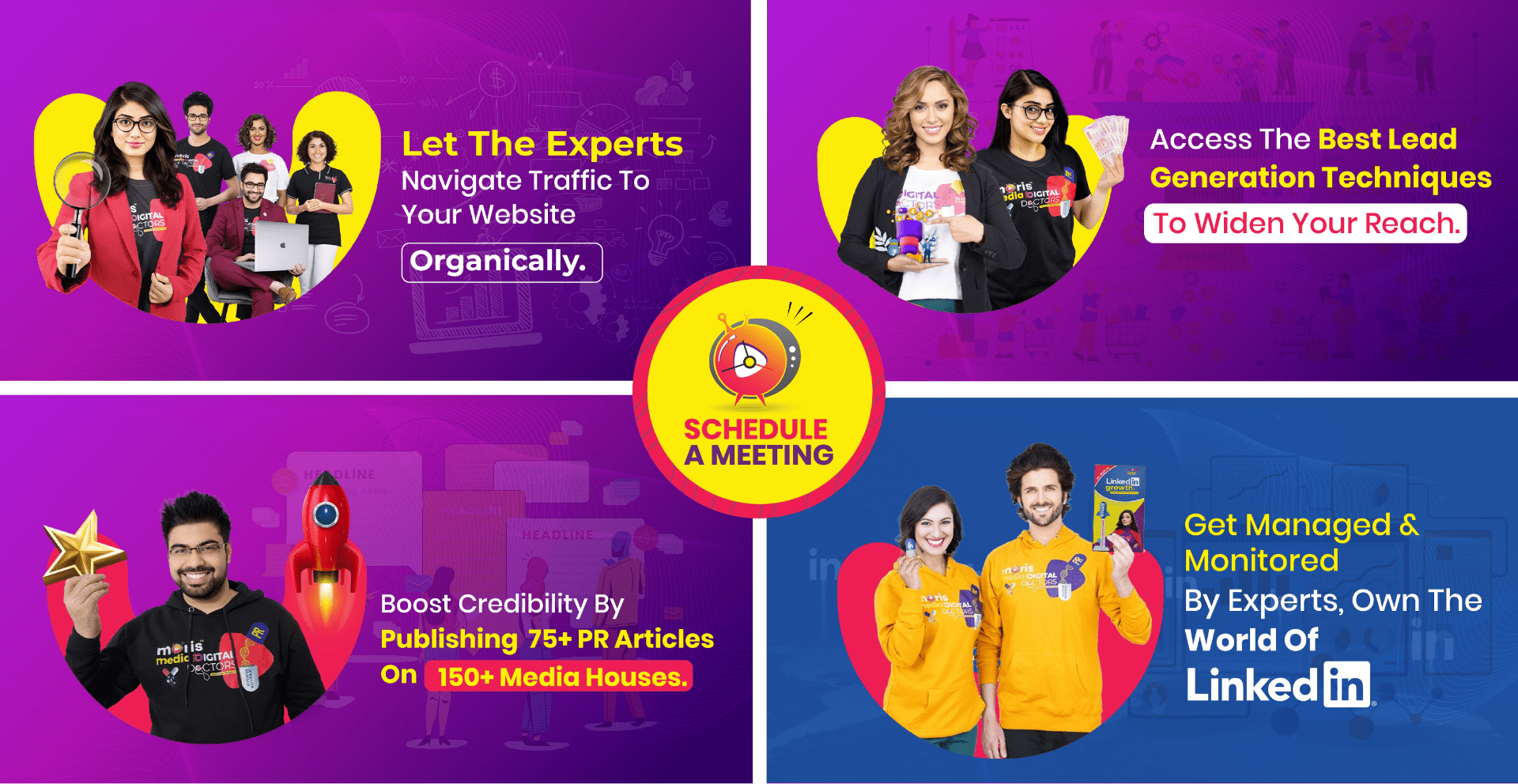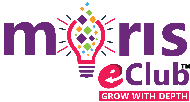Frequently Asked Questions
Leveraging partnerships and collaborations can be an effective strategy for lead generation as it allows businesses to tap into new audiences, leverage complementary expertise, and benefit from shared resources. Here are some ways to leverage partnerships and collaborations for lead generation:
Identify Strategic Partners: Identify businesses or organizations that share a similar target audience or have complementary products or services. Look for partners that align with your brand values and have a non-competitive relationship with your business. Strategic partnerships maximize the potential for lead generation.
Joint Marketing Efforts: Collaborate with your partners on joint marketing campaigns to reach a wider audience. This can include co-branded content, joint webinars or workshops, shared social media campaigns, or cross-promotional activities. By combining resources and expertise, you can generate leads collectively.
Referral Programs: Establish referral programs with your partners to incentivize them to refer leads to your business. Offer mutual incentives for successful referrals, such as discounts, commissions, or rewards. Referral programs can tap into the trust and relationships your partners have built with their audience, increasing the chances of generating high-quality leads.
Co-host Events or Webinars: Organize events or webinars in collaboration with your partners. Pool your resources, expertise, and networks to deliver valuable content and attract attendees. These events provide opportunities to capture leads through registration forms, follow-up emails, and networking opportunities.
Guest Blogging and Content Sharing: Contribute guest blog posts or articles on your partners' websites or invite them to contribute to your content. By leveraging each other's audiences and sharing valuable content, you can generate leads and establish thought leadership within the industry.
Bundle or Package Offers: Create bundled offerings or package deals that combine products or services from your business and your partners. This provides added value to customers and encourages lead generation through cross-selling or upselling opportunities. Promote these joint offerings through your marketing channels and those of your partners.
Co-sponsorship and Co-branding: Collaborate with partners to co-sponsor events, charities, or industry initiatives. Co-brand marketing materials, such as banners, signage, or promotional items, to increase brand visibility. Joint efforts create a stronger presence and attract leads who are interested in both brands.
Lead Sharing and Lead Exchanges: Establish lead sharing or lead exchange programs with your partners. This involves sharing leads or customer databases to expand your reach and tap into new potential customers. Ensure that proper data protection and privacy measures are in place when sharing customer information.
Collaborative Content and Resource Creation: Collaborate with partners to create valuable content assets such as e-books, whitepapers, or industry reports. Pool your expertise and resources to develop comprehensive resources that address common challenges or provide insights. Collect lead information in exchange for accessing the shared content.
Continuous Relationship Building: Maintain open lines of communication and foster ongoing relationships with your partners. Regularly discuss opportunities for collaboration, share industry insights, and support each other's initiatives. Building strong, mutually beneficial relationships with partners increases the potential for long-term lead generation success.
Moris Media says it is important to establish clear agreements and guidelines when entering into partnerships or collaborations. Clearly define roles, responsibilities, and expectations to ensure a smooth and mutually beneficial working relationship. By leveraging partnerships and collaborations, you can expand your reach, tap into new audiences, and generate leads that may have otherwise been inaccessible.
Moris Media, India’s top lead generation agency, highlights some notable trends that have been shaping the field of lead generation.
Interactive Content: Interactive content, such as quizzes, assessments, calculators, and interactive videos, is gaining popularity for lead generation. These types of content engage users, provide personalized experiences, and collect valuable data in the process.
Conversational Marketing: Conversational marketing focuses on real-time interactions and personalized conversations with leads. Chatbots, live chat, and messaging apps are used to engage leads, answer their questions, and guide them through the buyer's journey.
Artificial Intelligence (AI) and Machine Learning (ML): AI and ML technologies are being leveraged to automate and optimize lead generation processes. AI-powered chatbots, predictive analytics, lead scoring, and personalization algorithms enhance efficiency and improve targeting.
Voice Search Optimization: With the rise of voice assistants and smart speakers, optimizing content for voice search is becoming important for lead generation. Marketers need to optimize their websites and content to match the conversational queries users make through voice search.
Account-Based Marketing (ABM): ABM focuses on targeting specific accounts or companies rather than individual leads. It involves personalized marketing efforts tailored to the needs and characteristics of key accounts, aiming to generate high-value leads and drive business growth.
Influencer Marketing: Collaborating with industry influencers to promote products or services is an effective way to generate leads. Influencers have established credibility and a loyal following, and their endorsements can influence purchasing decisions.
Privacy and Data Protection: Increasing concerns about data privacy have led to stricter regulations such as the General Data Protection Regulation (GDPR), Information Technology Act and other consumer protection acts worldwide. Businesses need to ensure compliance and adopt transparent data collection and handling practices to build trust with leads.
Omni-Channel Marketing: Lead generation efforts are moving beyond single-channel campaigns. Integration and synchronization of multiple marketing channels, such as social media, email, search, and offline channels, are becoming essential to provide consistent and personalized experiences across touchpoints.
Video Marketing: Video continues to dominate online content consumption. Using video in lead generation campaigns helps captivate and engage users, convey information effectively, and build brand awareness. Live videos, webinars, and video testimonials are gaining traction.
Personalization and Customer Experience: Customers increasingly expect personalized experiences throughout their buyer's journey. Tailoring content, offers, and interactions to specific leads' preferences and needs enhances engagement, conversion rates, and customer loyalty.
It is important for you to realise that the lead generation landscape is constantly evolving, and new trends are continuously emerging. Keeping an eye on the latest developments and adapting strategies accordingly is crucial to staying ahead in lead generation efforts.
A celebrity manager performs a variety of tasks to support and advance the career of a celebrity. Moris Media highlights some of the key responsibilities of our celebrity managers:
Talent Representation: A celebrity manager serves as the primary point of contact and representative for the celebrity in all professional matters.
Career Planning: They devise long-term strategies to help shape and guide the celebrity's career, identifying opportunities for growth and success.
Contract Negotiation: Celebrity managers handle contract negotiations for various projects, including films, TV shows, music albums, endorsements, and appearances.
Brand Endorsements: They seek out and manage brand endorsement deals, ensuring alignment with the celebrity's image and values.
Publicity and Media Relations: Celebrity managers coordinate media appearances, interviews, and press releases to generate positive publicity and maintain a favourable public image.
Personal Branding: They work on building and managing the celebrity's personal brand, creating a distinct identity that aligns with their talents, values, and target audience.
Financial Management: Celebrity managers oversee financial matters, including budgeting, accounting, and financial planning, ensuring the celebrity's financial well-being.
Image and Reputation Management: They handle crisis management, damage control, and reputation enhancement to safeguard the celebrity's public image and mitigate negative situations.
Talent Development: Celebrity managers identify opportunities for talent development, such as acting workshops, vocal training, and other skill enhancement programs.
Event Management: They coordinate appearances, performances, and public engagements, managing logistics, scheduling, and travel arrangements.
Networking: Celebrity managers build and maintain relationships with industry professionals, including agents, publicists, directors, producers, and brand representatives, to create opportunities for their clients.
Social Media Management: They oversee the celebrity's social media presence, engaging with fans, managing content, and strategizing to enhance the online brand.
Team Coordination: Celebrity managers collaborate with a team of professionals, including agents, publicists, lawyers, stylists, and assistants, to ensure smooth operations and cohesive representation.
Long-term Planning: They assist in making strategic career decisions, such as selecting roles or projects, exploring new markets, and diversifying the celebrity's portfolio.
Personal Support: Celebrity managers often provide emotional support, guidance, and mentorship to their clients, acting as a trusted advisor and confidant.
Becoming a celebrity manager typically requires a combination of education, skills, experience, and networking. Moris Media suggests some steps you can take to pursue a career in celebrity management:
Gain Relevant Education: While there is no specific educational path for celebrity management, obtaining a degree in fields such as business management, communications, marketing, or entertainment management can provide a solid foundation. Consider pursuing courses or certifications that focus on talent management, contract negotiation, public relations, and marketing.
Develop Interpersonal and Communication Skills: Celebrity management involves working closely with high-profile individuals and handling various stakeholders. Strong interpersonal skills, effective communication, and the ability to build and maintain relationships are crucial.
Gain Industry Experience: Start by gaining experience in the entertainment industry or related fields. Consider internships or entry-level positions at talent agencies, event management companies, PR firms, or entertainment production companies. This will provide you with valuable industry insights and connections.
Networking: Build a network of contacts within the entertainment industry. Attend industry events, seminars, and conferences. Connect with professionals such as agents, publicists, talent scouts, and other industry insiders. Networking can open doors to potential clients and career opportunities.
Specialize and Hone Skills: Determine your area of specialization within celebrity management. It could be talent scouting, contract negotiation, brand endorsements, or image management. Hone your skills in that particular area to differentiate yourself and enhance your expertise.
Assist Established Celebrity Managers: Consider working as an assistant or junior manager for an established celebrity manager. This provides valuable hands-on experience, mentorship, and exposure to the workings of the industry.
Build a Professional Reputation: Develop a reputation for professionalism, reliability, and discretion. Your ability to maintain confidentiality and handle sensitive information is crucial in the field of celebrity management.
Develop a Portfolio: As you gain experience, build a portfolio showcasing your successful projects, endorsements, and clients. Highlight your achievements and demonstrate your ability to manage and elevate a celebrity's career.
Stay Updated: Keep up with industry trends, emerging artists, and changes in the entertainment landscape. Stay informed about the latest technology, social media platforms, and marketing strategies that can impact celebrity management.
Obtain Necessary Licenses or Certifications: Depending on your location and the services you offer, there may be specific licenses or certifications required for operating as a celebrity manager. Research and comply with any legal or regulatory requirements.
To excel in celebrity management, you need a combination of skills and attributes. Here are some essential skills needed for success in the field:
Communication Skills: Strong verbal and written communication skills are vital for effective interaction with clients, industry professionals, media, and other stakeholders. Clear and persuasive communication helps convey the celebrity's message, negotiate contracts, and manage relationships.
Interpersonal Skills: Building and maintaining relationships is at the core of celebrity management. Excellent interpersonal skills allow you to connect with clients, understand their needs, collaborate with team members, and navigate complex situations. Empathy, diplomacy, and the ability to handle diverse personalities are crucial.
Networking: Developing a broad network of contacts within the entertainment industry is essential. Strong networking skills help you connect with agents, publicists, casting directors, producers, and brand representatives. This enables you to create opportunities, negotiate deals, and stay informed about industry trends.
Business and Financial Acumen: Celebrity management involves making strategic business decisions, negotiating contracts, and managing finances. Understanding contract terms, budgeting, forecasting, and financial planning are essential skills for effective management of a celebrity's career.
Problem-Solving and Decision-Making: Celebrity management often involves navigating complex and challenging situations. Strong problem-solving skills help you find creative solutions, make quick decisions, and handle unexpected circumstances effectively.
Negotiation Skills: Negotiating contracts, endorsement deals, appearances, and other agreements is a critical aspect of celebrity management. Strong negotiation skills, including the ability to analyse contracts, advocate for your client's interests, and find win-win solutions, are crucial.
Organization and Time Management: Celebrity managers handle numerous tasks simultaneously, including scheduling, travel arrangements, meetings, and contractual obligations. Excellent organizational and time management skills are essential to ensure all responsibilities are fulfilled efficiently.
Attention to Detail: Paying close attention to detail is crucial in celebrity management, as even minor mistakes can have significant consequences. Whether it's contract terms, media releases, or scheduling, meticulousness and accuracy are vital to avoid errors.
Adaptability and Flexibility: The entertainment industry is dynamic and constantly evolving. Celebrity managers need to be adaptable and flexible, adjusting strategies and plans as per changing circumstances, industry trends, and client needs.
Confidentiality and Discretion: Trust is paramount in celebrity management. Maintaining strict confidentiality and exercising discretion regarding personal and professional matters is essential for building and maintaining trust with clients.
Knowledge of Entertainment Industry: Staying knowledgeable about the entertainment industry, including trends, popular culture, emerging talent, and industry dynamics, is essential. This allows you to identify opportunities, make informed decisions, and provide valuable guidance to your clients.
Emotional Intelligence: Emotional intelligence helps you understand and manage emotions, both in yourself and in others. This skill enables you to navigate sensitive situations, provide support to clients, and build strong professional relationships.
Moris Media urges you to remember that while these skills are crucial, they can be further developed and honed through experience, continuous learning, and professional growth. Celebrity management requires a unique blend of business acumen, interpersonal skills, industry knowledge, and the ability to adapt to the ever-changing dynamics of the entertainment world.
Bing Webmaster Tools is a free tool provided by Microsoft that allows website owners and marketers to monitor and maintain their site's presence in Bing search results. Similar to Google Search Console, Bing Webmaster Tools provides a wealth of data and insights into how Bing crawls and indexes your site, as well as any issues that may be impacting your site's performance in Bing search results.
Site performance: Bing Webmaster Tools provides information on your site's performance in Bing search results, including impressions, clicks, and click-through rates.
Indexing status: Bing Webmaster Tools provides information on how many pages of your site have been indexed by Bing, as well as any indexing issues that may be impacting your site.
Search keywords: Bing Webmaster Tools provides insights into the keywords and queries that are driving traffic to your site from Bing search results.
Sitemaps: Bing Webmaster Tools allows you to submit a sitemap of your site to help Bing crawl and index your pages more efficiently.
Crawl issues: Bing Webmaster Tools alerts you to any crawl issues that may be impacting your site's visibility in Bing search results.
To use Bing Webmaster Tools for SEO, you will need to verify ownership of your website and add your site to Bing Webmaster Tools. Once your site is added, you can access the various features and reports provided by Bing Webmaster Tools.
A 301 redirect is a server-side HTTP status code that indicates a permanent redirect from one URL to another. When a user or search engine crawler attempts to access the original URL, the server will automatically redirect them to the new URL.
301 redirects are commonly used to redirect old or outdated URLs to new or updated URLs. This can be helpful in a number of situations, such as when you have changed your site's URL structure, moved content to a new domain, or updated the URL of a specific page.
Moris Media lists the ways that 301 redirects can affect SEO:
Preservation of link equity: When a 301 redirect is used to redirect an old URL to a new URL, any inbound links pointing to the old URL will be redirected to the new URL. This helps to preserve the link equity of the original URL and pass it along to the new URL.
Page authority transfer: When a 301 redirect is used to redirect an old URL to a new URL, any page authority or ranking signals associated with the old URL will be transferred to the new URL. This helps to ensure that the new URL has the best possible chance of ranking well in search results.
Prevention of duplicate content: When multiple URLs contain the same content, it can be seen as duplicate content by search engines, which can negatively impact SEO. By using a 301 redirect to redirect duplicate URLs to a single, canonical URL, you can help to prevent duplicate content issues.
Improved user experience: When users attempt to access an old or outdated URL, a 301 redirect can automatically redirect them to the new, updated URL. This helps to improve the user experience by ensuring that users are directed to the correct page and can find the content they are looking for.
A 404 error is an HTTP status code that indicates that the requested page or resource could not be found on the server. This typically occurs when a user or search engine crawler attempts to access a page or resource that has been deleted or moved without a proper redirect in place. The reasons through which it can impact SEO include:
Loss of link equity: When a page or resource returns a 404 error, any inbound links pointing to that page or resource will not pass along their link equity to your site. This can result in a loss of valuable backlinks, which can negatively impact your site's overall SEO performance.
Negative user experience: When a user encounters a 404 error, they may become frustrated or confused and may leave your site. This can result in a high bounce rate and a lower time on site, both of which can negatively impact your site's SEO.
Negative impact on crawlability: When search engine crawlers encounter a 404 error, they may assume that the page or resource has been permanently removed and may remove it from their index. This can result in a negative impact on your site's crawlability and overall visibility in search results.
Moris Media suggests the following steps to minimize the negative impact of 404 errors on your site's SEO:
Use a custom 404 error page: By creating a custom 404 error page, you can provide users with helpful information and links to other areas of your site. This can help to reduce the negative impact on user experience and encourage users to continue exploring your site.
Monitor for 404 errors: Regularly monitor your site for 404 errors using tools such as Google Search Console or Bing Webmaster Tools. This can help you identify and resolve 404 errors before they have a significant impact on your site's SEO.
Implement proper redirects: When moving or deleting pages or resources on your site, be sure to implement proper redirects, such as 301 redirects, to redirect users and search engines to the new location of the page or resource. This can help to preserve link equity and prevent negative impact on crawlability.
Duplicate content refers to content that appears in more than one location on the internet. This can occur for a variety of reasons, such as when a website publishes the same content on multiple pages or when multiple websites publish the same content. Duplicate content can have a negative impact on SEO because search engines may have difficulty determining which version of the content to show in search results, and may even penalize sites with a large amount of duplicate content.
To avoid the negative impact of duplicate content on SEO, Moris Media suggests:
Create unique and valuable content: By creating unique and valuable content, you can help to ensure that your site stands out from other sites and provides value to users.
Use canonical tags: If you have multiple pages on your site that contain similar or identical content, you can use canonical tags to indicate which page should be considered the "canonical" version of the content. This can help to consolidate the page authority and prevent the splitting of link equity.
Use 301 redirects: When moving or deleting content on your site, be sure to use 301 redirects to redirect users and search engines to the new location of the content. This can help to consolidate the page authority and prevent the splitting of link equity.
Monitor for duplicate content: Regularly monitor your site for duplicate content using tools such as Google Search Console or Bing Webmaster Tools. This can help you identify and resolve duplicate content issues before they have a negative impact on your site's SEO.
Thin content refers to low-quality, shallow, or minimal content that does not provide value to users. Thin content may be pages with little or no text, pages with duplicated content, or pages with very little useful information for the user. Thin content can have a negative impact on SEO because search engines strive to provide high-quality and relevant content to their users. Pages with thin content may be seen as low-quality, which can negatively affect their rankings in search results. To avoid the same, SEO experts at Moris Media suggest:
Focus on quality content: Create high-quality, relevant, and valuable content that provides value to your users. This can help to improve your rankings in search results and provide a better user experience.
Eliminate duplicate content: Remove any duplicate or low-quality content from your site. This can help to avoid penalties and improve your rankings in search results.
Consolidate similar content: If you have multiple pages on your site with similar content, consider consolidating them into a single, more comprehensive page. This can help to improve the quality of your content and avoid thin content issues.
Regularly update and refresh content: Keep your content fresh and up-to-date by regularly adding new content and updating old content. This can help to improve your rankings in search results and provide a better user experience.
A site audit is a process of evaluating the health and performance of a website, with the goal of identifying areas for improvement. A site audit can be conducted manually or through the use of specialized tools that analyse various aspects of a website, such as technical SEO, on-page SEO, content quality, backlinks, and user experience.
Moris Media asserts that site audit is important for SEO because it can help to identify areas of a website that may be negatively impacting its search engine visibility and rankings. By conducting a site audit, you can uncover issues such as broken links, duplicate content, slow page load times, and other technical SEO problems that may be preventing your site from ranking well in search results. Additionally, a site audit can help to identify opportunities for improvement in areas such as content quality, user experience, and backlink profiles.
Schema markup is a form of structured data that provides additional context and information about the content on a web page to search engines. This markup is added to the HTML code of a web page and provides a standardized way of communicating information about things like products, recipes, events, and more. By using schema markup, webmasters can help search engines better understand the content on their pages, which can improve the relevance and accuracy of search results.
Moris Media, India’s leading SEO agency, highlights some impactful aspects:
Increased visibility in search results: Pages that use schema markup may be eligible to appear in rich snippets, which are enhanced search results that provide additional information and context about the content on the page. This increased visibility can lead to higher click-through rates and more traffic to your site.
Better understanding of page content: Schema markup provides search engines with a standardized way of understanding the content on a web page. This can lead to more accurate indexing and better rankings in search results.
Improved relevance: By providing additional context and information about the content on a web page, schema markup can help to improve the relevance of search results, leading to a better user experience.
Increased click-through rates: Pages that appear in rich snippets may have higher click-through rates than regular search results, as users are more likely to click on results that provide additional context and information about the content.
Local business schema is a type of structured data that provides additional information about a local business to search engines. This markup can include details such as the business name, address, phone number, opening hours, reviews, and more. By adding local business schema to a website, businesses can improve their visibility and rankings in local search results, as well as provide more information to potential customers.
Structured data is a type of markup language that provides additional context and information about the content on a web page to search engines. This markup can include details such as the page title, author, date published, featured image, and more. The impact it has on SEO includes:
Improved understanding of page content: Structured data provides search engines with a standardized way of understanding the content on a web page. This can lead to more accurate indexing and better rankings in search results.
Enhanced search features: Structured data can enable additional search features, such as rich snippets, knowledge panels, and carousels. These features can make it easier for users to find and interact with the content on a web page, leading to a better user experience and potentially higher click-through rates.
Increased visibility in search results: Pages that use structured data may be eligible to appear in rich snippets, knowledge panels, and other enhanced search features. This increased visibility can lead to higher click-through rates and more traffic to your site.
Improved relevance: By providing additional context and information about the content on a web page, structured data can help to improve the relevance of search results, leading to a better user experience.
A featured snippet is a type of search result that appears at the top of the search engine results page (SERP) in a special box, providing a summary of the content on a web page that best matches the user's search query. Featured snippets are designed to provide quick answers to users' questions without requiring them to click through to a website.
SEO experts at Moris Media highlights the tricks of optimizing features snippets:
Identify relevant keywords: Conduct keyword research to identify the keywords that are most likely to trigger a featured snippet. Focus on long-tail keywords that are closely related to the topic of your content.
Create high-quality content: Create high-quality content that answers the user's question in a clear and concise manner. Use headings, bullet points, and other formatting to make your content easy to read and understand.
Use structured data: Use structured data such as schema markup to provide additional information about your content to search engines.
Optimize for the right type of featured snippet: There are several types of featured snippets, including paragraphs, lists, and tables. Identify the type of featured snippet that is most appropriate for your content and optimize accordingly.
Provide a clear and concise answer: Featured snippets typically provide a short summary of the content on a web page. Provide a clear and concise answer to the user's question in the first few sentences of your content.
Focus on user intent: Understand the user's intent behind their search query and optimize your content accordingly. Focus on providing valuable information that meets the user's needs.
The Knowledge Graph is a knowledge base created by Google to provide users with more accurate and relevant search results by connecting various entities and facts. The Knowledge Graph displays information directly in the search results, rather than requiring users to click through to a website. This feature helps to improve the user experience and provide quick answers to users' questions and Moris Media tells you how you can optimize it.
Create high-quality content: Focus on creating high-quality content that provides valuable and accurate information about your topic. Use clear and concise language, and make sure your content is well-organized and easy to read.
Use structured data: Use structured data such as schema markup to provide additional information about your content to search engines.
Include relevant information: Include relevant information about the entities related to your topic, such as people, places, and events. Make sure this information is accurate and up-to-date.
Optimize for entity search: Focus on optimizing your content for entity search by including information about specific entities related to your topic. Use relevant keywords and phrases that relate to these entities.
Focus on local optimization: If your business has a physical location, focus on local optimization by including information about your location, hours of operation, and contact information.
Encourage social sharing: Encourage social sharing of your content to increase its visibility and relevance. Use social media platforms to promote your content and encourage others to share it.
Google My Business (GMB) is a free tool provided by Google that allows businesses to manage their online presence on Google, including their business information, reviews, and photos. It is an essential tool for local SEO as it can help businesses to appear in local search results and improve their visibility and credibility to potential customers and Moris Media provides you with usage guidelines.
Claim and verify your listing: First, claim and verify your business listing on Google My Business to ensure that your business information is accurate and up-to-date.
Optimize your profile: Make sure that your GMB profile is complete and accurate, including your business name, address, phone number, website URL, and hours of operation. Also, add photos and videos to showcase your business to potential customers.
Encourage reviews: Encourage your customers to leave reviews on your GMB profile, as positive reviews can improve your visibility and credibility in local search results.
Monitor and respond to reviews: Monitor your GMB profile for new reviews and respond to them promptly, both positive and negative. This can show potential customers that you care about their feedback and are committed to providing excellent customer service.
Use Google Posts: Use Google Posts to share updates, promotions, and other news with potential customers. These posts can appear in local search results and help to increase your visibility.
Analyse your performance: Use the analytics tools provided by Google My Business to monitor your performance, including your profile views, clicks, and actions. Use this data to optimize your profile and improve your local SEO
Moris Media believes that citations are an important factor in local SEO, as they can help to improve a business's visibility and credibility in local search results. By ensuring that their business information is consistent and accurate across all online directories and platforms, businesses can increase their chances of appearing in local search results and connecting with potential customers.
Google Map Pack (also known as the Local Pack or 3-Pack) is a feature of Google Maps and Google Search that displays the top three local businesses related to the user's search query on a map with contact details and directions. Moris Media provides you with optimization guidelines:
Create a Google My Business profile: The first step to appearing in the Google Map Pack is to create and optimize your Google My Business profile. Fill in all the details about your business, including your name, address, phone number, hours of operation, and photos.
Use local keywords: Use local keywords in your website content, meta tags, and headings to indicate your business's location and relevance to local searches.
Get listed on local directories: Get listed on local directories such as Yelp, Yellow Pages, and other niche-specific directories. Ensure that your business name, address, and phone number (NAP) are consistent across all directories and your website.
Get customer reviews: Encourage your customers to leave positive reviews on your Google My Business profile and other online directories. Positive reviews can help to improve your business's visibility and credibility in local search results.
Optimize your website for local SEO: Optimize your website for local SEO by including local keywords in your content, meta tags, and headings. Also, include your business address and phone number on your website.
Use Google Maps: Embed Google Maps on your website to indicate your business's location and make it easier for potential customers to find you.
Use schema markup: Use schema markup on your website to provide search engines with additional information about your business, such as your address, phone number, and hours of operation.
As the leading SEO agency in India, Moris Media lists out some of the most common SEO mistakes that you need to avoid:
Keyword stuffing: Avoid stuffing your content with too many keywords, as this can make your content difficult to read and appear spammy to search engines.
Duplicate content: Avoid using duplicate content on your website, as this can confuse search engines and potentially harm your website's ranking.
Ignoring mobile optimization: Make sure your website is optimized for mobile devices, as an increasing number of users are accessing the internet on mobile devices.
Neglecting user experience: Focus on providing a positive user experience by ensuring that your website is easy to navigate, loads quickly, and provides valuable and relevant information to users.
Neglecting local SEO: If your business has a physical location, make sure to optimize for local SEO by creating a Google My Business profile, getting listed on local directories, and using local keywords in your content.
Ignoring social media: Use social media to promote your content and engage with your audience, as this can help to drive traffic to your website and improve your online presence.
Ignoring analytics: Use analytics tools such as Google Analytics to monitor your website's performance and identify areas for improvement. Use this data to optimize your website for better performance and improved SEO.
The KPIs for a Business Development Manager at Moris Media, Dublin top leading digital marketing agency, may differ depending on the company's goals and objectives. Nevertheless, here are some typical KPIs for a Business Development Manager:
Revenue Growth: Increase in revenue generated through new business deals and partnerships.
New Business Acquisition: The number of new clients or customers brought in through the efforts of the business development manager.
Conversion Rate: The percentage of leads generated that convert into actual sales or customers.
Customer Retention: The ability to retain existing clients and customers, demonstrating successful relationship management.
Market Penetration: The expansion of the Moris Media’s market share in new or existing markets.
Pipeline Development: The growth and maintenance of the sales pipeline, which includes identifying new leads and qualifying potential opportunities.
ROI: Return on investment of business development activities, including events, campaigns, and other marketing initiatives.
These KPIs can help evaluate the success and impact of a Business Development Manager's efforts and contribution to the overall growth of the Moris Media.
To become a Business Development Manager in Moris Media United States best and top leading digital marketing agency, you need to possess certain skills, knowledge, and experience. Some of the essential skills required for this role are communication skills, strategic thinking, sales skills, networking skills, project management skills, and adaptability.
Moreover, you will need to have experience in business development, sales, marketing, or a related field to be considered for the position. A degree or diploma in business administration, marketing, or a related field can be helpful, but it is not always necessary.
Therefore, while anyone can aspire to become a Business Development Manager in Moris Media a top leading digital marketing agency, you will need to have the right skills, knowledge, and experience to be successful in this role.
It is possible to become a business development manager without experience in Moris Media Dublin best and fast paced digital marketing agency, but it may be more challenging to do so. Business development managers in Moris Media involves identifying new opportunities and developing strategies to grow a company's revenue and market share, so having a solid understanding of business principles and strong communication and networking skills can be valuable in this role. It may also be helpful to gain some knowledge of the Moris Media through research and networking with professionals in the field.
Being a Business Development Manager in Moris Media top leading and best digital marketing agency in United States can be challenging, but it can also be rewarding. The role requires strong strategic thinking skills, the ability to identify and pursue new business opportunities, excellent communication and networking skills, and the ability to build and maintain relationships with clients and partners. In Moris Media , the Business Development Manager may face additional challenges such as staying up to date with new trends and technologies, navigating the changing landscape of media consumption, and managing relationships with content creators and influencers. However, with the right skills, mindset, and work ethic, the role of a Business Development Manager in Moris Media can be both challenging and fulfilling.
To excel as a graphic designer at Moris media, United States best and prominent digital marketing and PR firm, one must possess mastery in visual communication and storytelling through graphic design. This encompasses the creation of captivating and stimulating designs that incorporate images, graphics, and text. Here are some general steps you can follow:
Get a formal education in graphic design or a related field, such as fine arts, visual communication, or digital media. You can attend a college or university or take online courses offered by Moris Media.
Build a strong portfolio that showcases your design skills and creative vision. You can create your own projects or collaborate with others to gain experience.
Develop proficiency in graphic design software, such as Adobe Photoshop, Illustrator, and InDesign..
Gain practical experience by doing internships, freelancing, offered by Moris Media. You can also join design competitions or participate in design events to build your network.
Stay up-to-date with design trends, technology, and best practices by attending workshops, conferences, or online resources. This will help you refine your skills and stay competitive in the Moris MEdia.
To become a graphic designer at Moris Media, United States top leading digital marketing and PR boutique, you may need the following qualifications:
Education: A degree in graphic design, visual arts, or a related field can help you develop the necessary technical and creative skills for the job. However, some employers may also accept candidates with a strong portfolio and relevant experience, regardless of their formal education.
Portfolio: A strong portfolio that showcases your design skills and creativity is an essential requirement for many graphic design positions. Your portfolio should include a variety of design projects that demonstrate your ability to work with different styles, media, and software.
Software proficiency: Graphic designers at Moris Media need to be proficient in various design software, such as Adobe Photoshop, Illustrator, and InDesign. Familiarity with other programs, such as Sketch, Figma, or Canva, can also be beneficial.
Communication skills: Graphic designers at Moris Media need to communicate effectively with clients, team members, and other stakeholders. You should have excellent written and verbal communication skills, as well as the ability to listen and understand the client's needs and preferences.
Creativity: Graphic designers at Moris Media need to be creative and able to generate new ideas and design solutions. You should be able to think outside the box and create original designs that stand out.
Attention to detail: Graphic designers at Moris Media need to pay attention to details and ensure that their designs are accurate, consistent, and error-free.
Time management: Graphic designers at Moris Media need to be able to manage their time effectively and work under tight deadlines. You should be able to prioritize tasks and work efficiently to meet project deadlines.
It's important to note that the specific qualifications and requirements may vary depending on the position and level of experience.
To start a career in graphic design at Moris Media, Dublin top leading digital marketing and PR boutique, you can follow these steps:
Develop your skills: Start by developing your graphic design skills through formal education, online courses, or self-study. Learn how to use design software, such as Adobe Photoshop, Illustrator, and InDesign, and practice creating various design projects to build your portfolio.
Build your portfolio: Assemble a strong portfolio that showcases your design skills and creativity. Include a variety of design projects that demonstrate your ability to work with different styles, media, and software. Make sure your portfolio is well-organized and presented in a professional manner.
Gain practical experience: Look for internships or freelance opportunities to gain practical experience in the field offered by Moris Media. This can help you build your network, learn from experienced designers, and add more projects to your portfolio.
Stay up-to-date with industry trends: Stay up-to-date with the latest design trends, software updates, and best practices of Moris Media. Attend workshops, conferences, or online resources to learn new skills, network with other designers, and stay ahead of the competition.
Apply for jobs at Moris Media: Once you have built your skills and portfolio and gained some practical experience, start looking for graphic design job openings at Moris Media. Submit your application and portfolio, and make sure to tailor your resume and cover letter to the specific job requirements.
Be persistent and patient: The graphic design industry can be competitive, so be persistent and patient in your job search. Keep honing your skills, building your portfolio, and gaining experience until you land your dream job at Moris Media or another top company in the industry.
For those with a passion for creativity, design, and visual communication, graphic design can be a fulfilling and rewarding career. At Moris Media, a top leading digital marketing and PR boutique in Ohio, graphic designers have the opportunity to work on a variety of projects, including branding and marketing campaigns, product packaging, and digital media. However, success in graphic design requires hard work, dedication, and ongoing learning and skill development. It's also important to research job opportunities and market demand to ensure a viable career path with Moris Media.
While having a degree is not always a requirement to become a graphic designer at Moris Media, a top leading and fast-paced digital marketing agency in Dublin having formal education and training in design can be advantageous. Pursuing a degree in graphic design or a related field can provide you with a solid foundation in design theory, software skills, and industry standards, which can give you a competitive edge when seeking employment with Moris Media. Additionally, pursuing a degree can help you build a portfolio of work and make valuable connections through internships and networking opportunities offered by Moris Media. However, many successful graphic designers have also built their careers through online resources, workshops, and boot camps available through Moris Media for those who want to develop their skills without pursuing a formal degree.
Graphic design can be challenging at times at Dublin best top leading PR boutique Moris Media, as it requires a combination of creativity, technical skills, problem-solving abilities, and attention to detail. It involves communicating ideas visually and creating designs that are visually appealing, effective, and functional. Additionally, graphic designers in Moris Media must keep up with the latest design trends, software, and technologies to stay competitive. However, with dedication, hard work, and continuous learning, the challenges of the job can be overcome. Ultimately, whether graphic design is difficult or not depends on the individual and their skills, experience, and personal preferences.
It is possible to be a graphic designer at Moris Media Ohio top leading and best digital marketing agency without coding skills. Moris Media is a digital marketing and PR boutique that offers a range of services, including branding, marketing campaigns, product packaging, and digital media. Depending on the specific job responsibilities, some positions may require knowledge of coding, but many others do not. The graphic designers at Moris Media typically use design software such as Adobe Illustrator, Photoshop, and InDesign to create visual designs, layouts, and graphics for print and digital media. Understanding design principles, color theory, typography, and composition is essential for creating effective and visually appealing designs, while coding skills are not always required. However, it can be beneficial for a graphic designer to have a basic understanding of coding concepts to effectively communicate with developers and have a better understanding of web design principles. Ultimately, the specific requirements for a graphic design job at Moris Media may vary depending on the position and the employer's needs.
Yes, it is possible to become a graphic designer without a degree at Ohio best and fast paced PR boutique Moris Media. While some graphic design positions may require a degree, many others do not. In the field of graphic design, having a strong portfolio that showcases your design skills and creativity is often more important than having a degree. There are many online resources, workshops, and boot camps of Moris Media available for those who want to develop their skills without pursuing a formal degree. However, having formal education and training in design can be beneficial, as it provides a strong foundation in design theory, software skills, and industry standards, which can give you a competitive edge when seeking employment in Moris Media.
A graphic designer at Moris Media, United Statestop leading digital marketing and PR boutique, should have a combination of creative, technical, and soft skills to succeed in the fast-paced and competitive environment. Here are some essential skills that a graphic designer should possess:
Creativity: A graphic designer should be creative and have a good eye for design, layout, typography, color, and composition to come up with innovative ideas for branding and marketing campaigns.
Software proficiency: A graphic designer at Moris Media should be proficient in using design software such as Adobe Illustrator, Photoshop, and InDesign.
Communication skills: A graphic designer should be able to effectively communicate their ideas to clients, team members, and stakeholders in a clear and concise manner.
Attention to detail: A graphic designer should pay attention to detail and have a strong understanding of design principles to ensure the quality of the work.
Time management: A graphic designer should be able to manage their time effectively to meet deadlines and deliver quality work in a timely manner.
Problem-solving: A graphic designer should be able to solve design problems and come up with creative solutions to design challenges.
Collaboration: A graphic designer at Moris Media should be able to work well with others, collaborate effectively with team members and clients, and take constructive feedback.
Adaptability: A graphic designer should be adaptable and able to work in a fast-paced and ever-changing environment at Moris Media.
Graphic designers at Moris Media, a top leading digital marketing and PR boutique in United States, should be familiar with a variety of design skills and techniques, including:
Branding and Identity Design: A graphic designer should be able to create effective visual identities and branding for Moris Media's clients that communicate their brand values and messaging.
Digital Design: A graphic designer should have knowledge of digital design concepts such as UI/UX design, responsive design, web design, and mobile app design to create effective digital media for Moris Media's clients.
Print Design: A graphic designer should be able to design print materials such as business cards, brochures, flyers, posters, and billboards for Moris Media's clients.
Layout and Composition: A graphic designer should have knowledge of layout and composition principles and techniques to create visually appealing and effective designs.
Typography: A graphic designer should have knowledge of typography and font usage to create clear, readable, and visually appealing designs.
Color Theory: A graphic designer should have knowledge of color theory and color usage to create effective and harmonious color schemes in their designs.
Software Skills: A graphic designer at Moris Media should be proficient in design software such as Adobe Photoshop, Illustrator, and InDesign to create high-quality designs.
Marketing and Advertising Concepts: A graphic designer should have knowledge of marketing and advertising concepts to create effective designs that meet the needs and goals of Moris Media's clients.
As a graphic designer in Dublin top leading and fast paced digital marketing agency Moris Media, some of the tasks and responsibilities may include:
Creating visual designs: A graphic designer is responsible for creating visual designs, including logos, marketing materials, web and mobile app designs, packaging, and other promotional materials.
Collaborating with clients and team members: Graphic designers work closely with clients, account managers, and other team members to understand the client's needs and goals and to ensure that designs meet their expectations.
Developing design concepts: Graphic designers develop design concepts and strategies that effectively communicate the client's message and values to the target audience.
Refining designs: Graphic designers refine designs based on feedback from clients, account managers, and other team members to ensure that the designs meet the client's goals and objectives.
Keeping up with industry trends: Graphic designers keep up with the latest design trends, tools, and software to remain competitive in the industry and to create designs that are up to the latest industry standards and best practices.
Graphic design can be a demanding and deadline-driven job in Moris Media, Dublin fast-paced digital marketing and PR boutique. It may require working under tight deadlines and collaborating with clients, account managers, and other team members to ensure that designs meet their expectations. In some cases, graphic designers may also be required to work on multiple projects simultaneously. This can sometimes lead to stress and pressure to deliver high-quality designs within the given timeframe. However, stress levels can vary depending on the specific project, client, and work environment. Additionally, some graphic designers may find that the creative process and the satisfaction of creating something visually appealing can balance out any potential stress. Ultimately, how stressful the job is will depend on the individual's temperament and their ability to manage their workload effectively.
In addition to technical skills, graphic designers in Moris Media , top leading and fast paced PR boutique in Dublinshould have certain soft skills to succeed in their roles. These can include:
Communication: Graphic designers need to be able to communicate effectively with clients, account managers, and other team members to understand project requirements and provide updates on their progress.
Creativity: Graphic designers need to be able to come up with innovative design ideas and solutions that meet the client's needs and effectively communicate their message.
Attention to detail: Graphic designers need to be detail-oriented and ensure that designs are error-free and meet the highest standards of quality.
Time management: Graphic designers should be able to manage their time effectively to ensure that they can meet project deadlines and work efficiently.
Collaboration: Graphic designers need to be able to work collaboratively with other team members, such as writers, web developers, and photographers in Moris Media, to bring the project to completion.
Flexibility: Graphic designers should be able to adapt to changes in project scope or direction and be open to feedback and constructive criticism.
Problem-solving: Graphic designers need to be able to identify and solve design problems that may arise during the project, such as technical issues, changes in project requirements, or design errors.
In Moris Media,a top leading and best ddigital marketing agency in United States, learning graphic design can be challenging, especially for those who have little to no prior experience. It involves acquiring technical skills such as using design software and understanding design principles such as layout, typography, and color theory. Additionally, design is a highly creative field, and developing an eye for aesthetics and design thinking requires time and practice. However, with dedication, resources, and guidance by Moris Media, it is definitely possible to learn graphic design and become proficient in it.
The qualifications for a graphic designer can vary depending on the specific job requirements in United States top leading and best PR boutique Moris media, but typically, a combination of education and experience is required.
In general, a graphic designer would typically need a degree in graphic design, visual arts or a related field, as well as a strong portfolio demonstrating their skills and experience in design.
In terms of skills, a graphic designer should be proficient in using design software such as Adobe Creative Suite, have a solid understanding of design principles such as typography, layout, and color theory, and possess strong communication and collaboration skills to work with clients and team members.
Overall, a combination of education, experience, and a strong portfolio are typically the most important qualifications for a graphic designer.
Being a good graphic designer in Ohio best and fast paced digital marketing and PR boutique, Moris Media requires a combination of creativity, technical skills, and understanding of the Moris Media culture and aesthetic. Some tips for improving your skills as a graphic designer in Moris Media include:
Stay up to date with the latest design trends in Moris Media.
Develop a strong understanding of the Moris Media audience and their preferences.
Use Moris Media's vibrant colors and bold typography to make designs that stand out.
Pay attention to details, such as alignment and spacing, to create visually pleasing designs.
Practice using design software and tools to improve your technical skills.
Be open to constructive feedback and continually seek to improve your designs.
Collaborate with other Moris Media designers and artists to expand your knowledge and skillset.
Remember that being a good graphic designer in Moris Media requires hard work, dedication, and a passion for creating visually appealing and culturally relevant designs.

















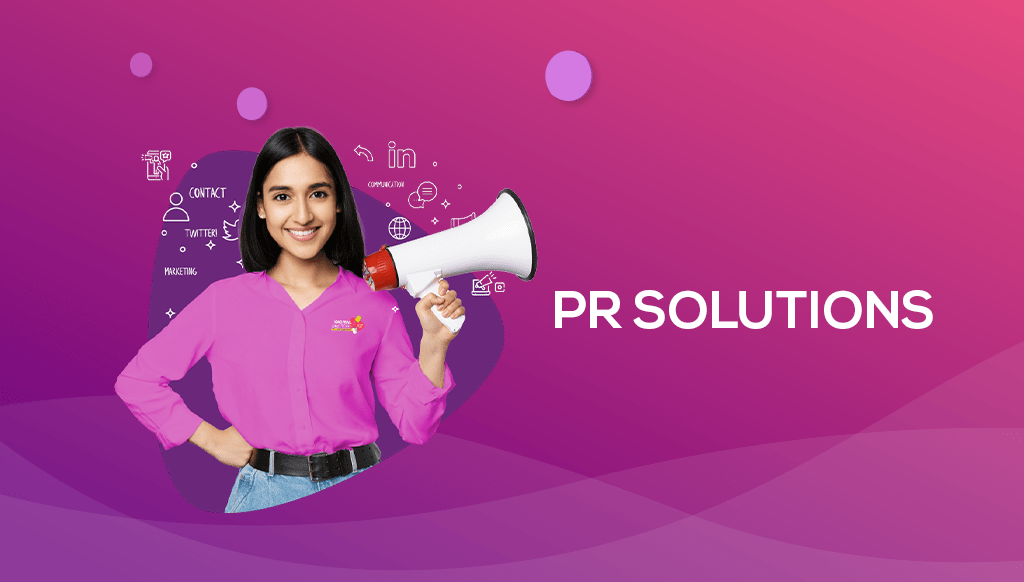
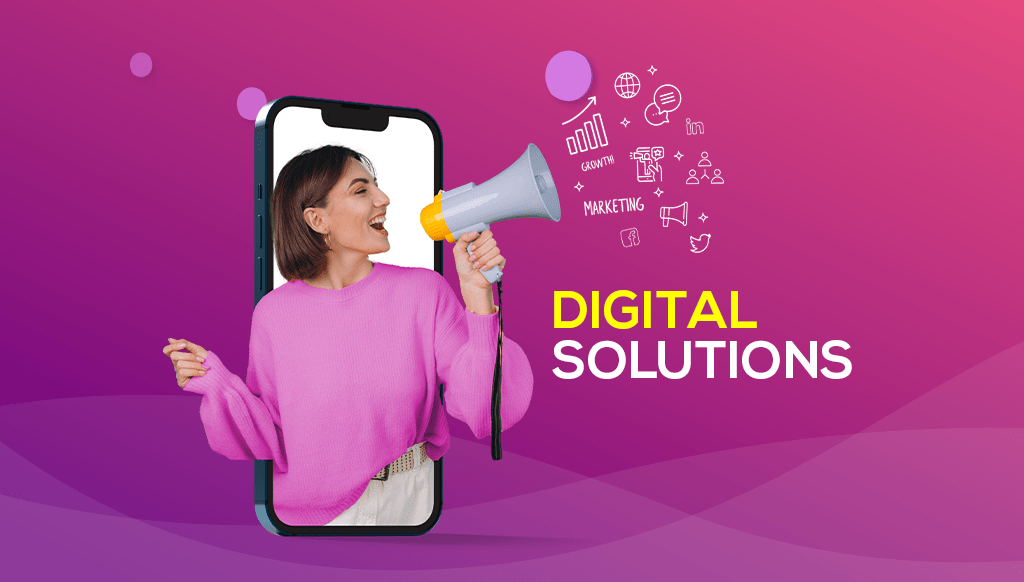
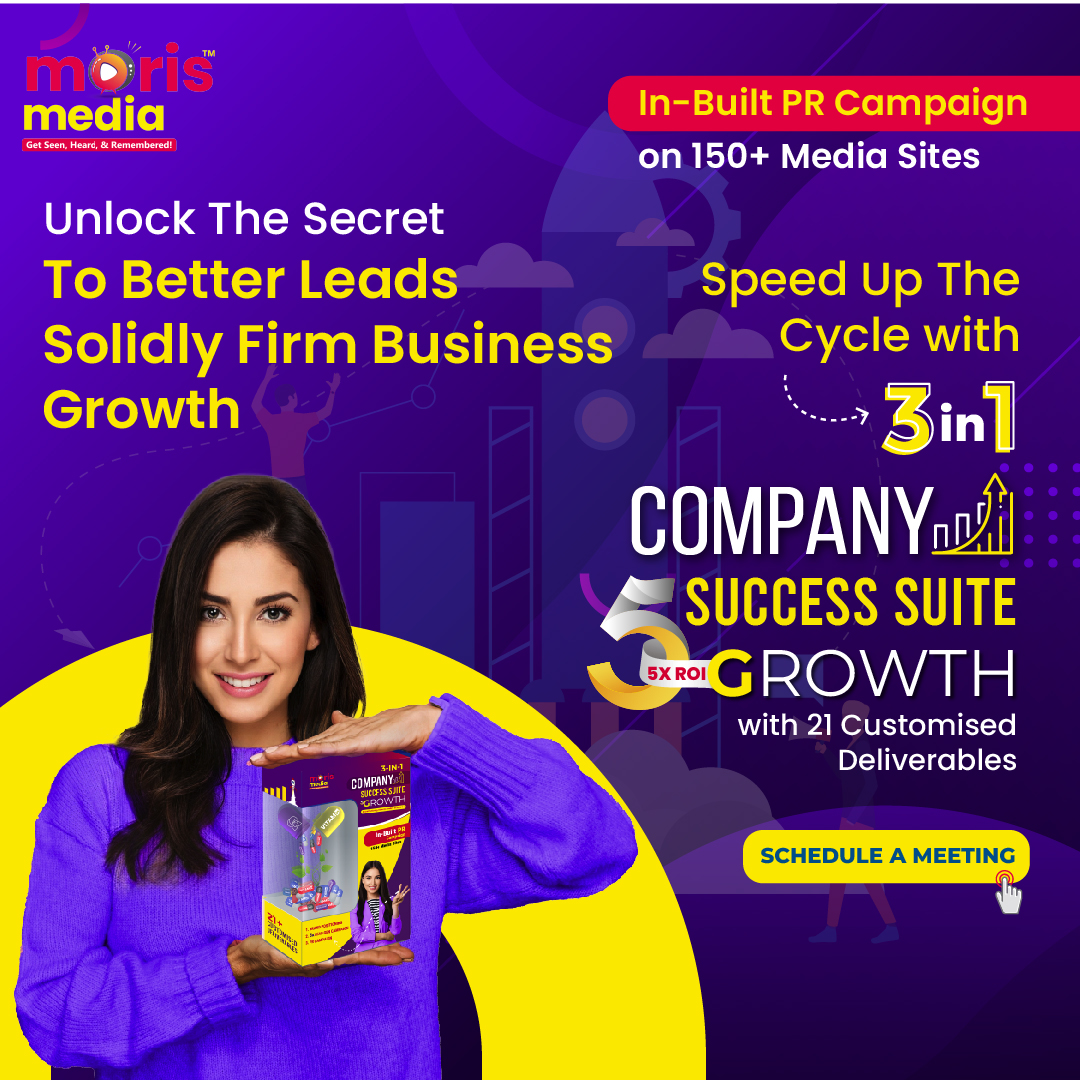

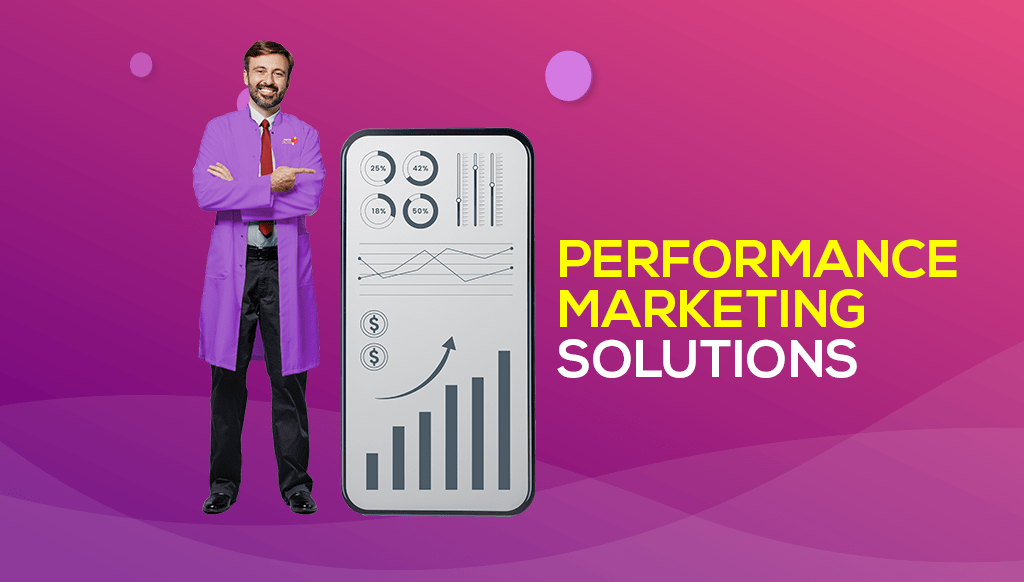
.png?v=1676960503)
